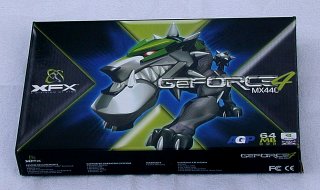In late 2003, I bought a PC with a GeForce 4 MX graphics card:
My PC hardware was similar to the hardware of the first Xbox that was released in November 2001:
I was still finishing the Bachelor's Degree in Computer Science at the Federal University. My final project was based on MRDX, which is my 2D game programming framework using C/C++ languages.
I wanted to test the graphics capability of my new PC, but I was afraid of getting involved with a game and losing focus on my final university activities.
I saw a game magazine on the newsstand that had the Unreal Tournament 2003 demo. This game uses Unreal Engine 2. I bought the magazine because UT 2003 was a great option to test my PC and as it was just a demo, the content of the game was limited. It was exactly what I wanted at that moment.
I was fascinated by the graphics and gameplay of Unreal Tournament 2003. I played this game demo a lot.
In early 2004, after completing my degree, I felt I needed a vacation. I decided to buy a game and take the time to enjoy it without worry. I found the Game of the Year edition of Deus Ex at a local computer store for half price:
Deus Ex was released in 2000 and received many awards. The game has a complex plot that addresses several conspiracy theories. Deus Ex gives the player immense freedom to solve challenges in many different ways, and player choices affect the narrative in meaningful ways.
It took me a few months to finish the Deus Ex campaign. It's a long, involved campaign with many twists and turns. This game was a true milestone in my gaming life.
After Deus Ex I bought the game Unreal Tournament 2004:
Unreal Tournament 2004 is like an expanded version of Unreal Tournament 2003. It uses Unreal Engine 2 with several improvements, added vehicles and "Onslaught" game mode, which allows large scale battles. All UT 2003 content is included in UT 2004.
I played Unreal Tournament 2004 for several years. This style of game allows for quick, fun matches. Furthermore I was fascinated by the game's graphics and environments.
In the second half of 2004 I saw the Freelancer game at a local computer store for a good price. I bought it because I think space combat simulation is interesting.
Freelancer is a space combat and trading game. In addition to the main campaign, we can explore space, take extra jobs, mine resources and trade them. What I liked most about the game was the artistic representation of different parts of the universe. I loved exploring the universe in my spaceship to see the different environments.
In December 2004, I saw a Fullgames magazine with the game Tron 2.0 on the newsstand:
I like sci-fi, tech and space themed games. I bought Tron 2.0 and started playing. The game is a sequel to the 1982 movie Tron. The events take place inside computers. I found Tron 2.0 very interesting because it uses several computing concepts to represent game locations, events, characters and weapons. The bright neon visual representation of the environments is very beautiful.
During the year 2004 I tried to explore the gaming market of the first cell phones with Java support that were appearing. I programmed several prototypes using Microjava and made contact with some companies. At that time these cell phones were still very limited but the market had great potential.
At the end of 2004, I hadn't achieved anything concrete in this mobile market. I saw a competitive examination from a government company with positions for software developers in the city where I live. I decided to take the exam.
In 2005 I stopped playing games to dedicate myself to studying for the exam. I took the exam in June 2005 and passed. I started working at this company in October 2005.
With my livelihood guaranteed by my job, I continued researching game development as a hobby and kept the Beljogos group active. I was always present at technology events in my city lecturing about game development.
In 2006, I acquired Bioware's Neverwinter Nights RPG. I had a simple DVD boxed version. A few years later a friend from work donated to me his version of the game that comes in a big box. The box has a cover that when opened shows a beautiful illustration of Neverwinter:
Neverwinter Nights was released in 2002. It is a 3D RPG game based on the rules of "Dungeons & Dragons" (D&D) and set in the world of "Forgotten Realms".
Neverwinter Nights was designed to be a pen-and-paper RPG simulation. The game has a traditional campaign, but the strong point of the game is the campaign editor called Aurora Toolset. It is possible to create a campaign, invite some friends to play this campaign online and act as Game Master controlling in real time some events of the game.
Aurora Toolset is an amazing editor. I learned a lot about RPG game programming by studying this editor:
In the second half of 2006 I bought the game Far Cry produced by the company Crytek:
Far Cry was the first game developed with CryEngine. CryEngine's graphics quality was impressive and the game was set on a paradise island. I loved exploring the environments. I took many screenshots of this game.
Far Cry has a map editor called Sandbox. Crytek released a 180-page manual teaching how to use the editor. I experimented with creating maps and missions in Far Cry for a while.


















